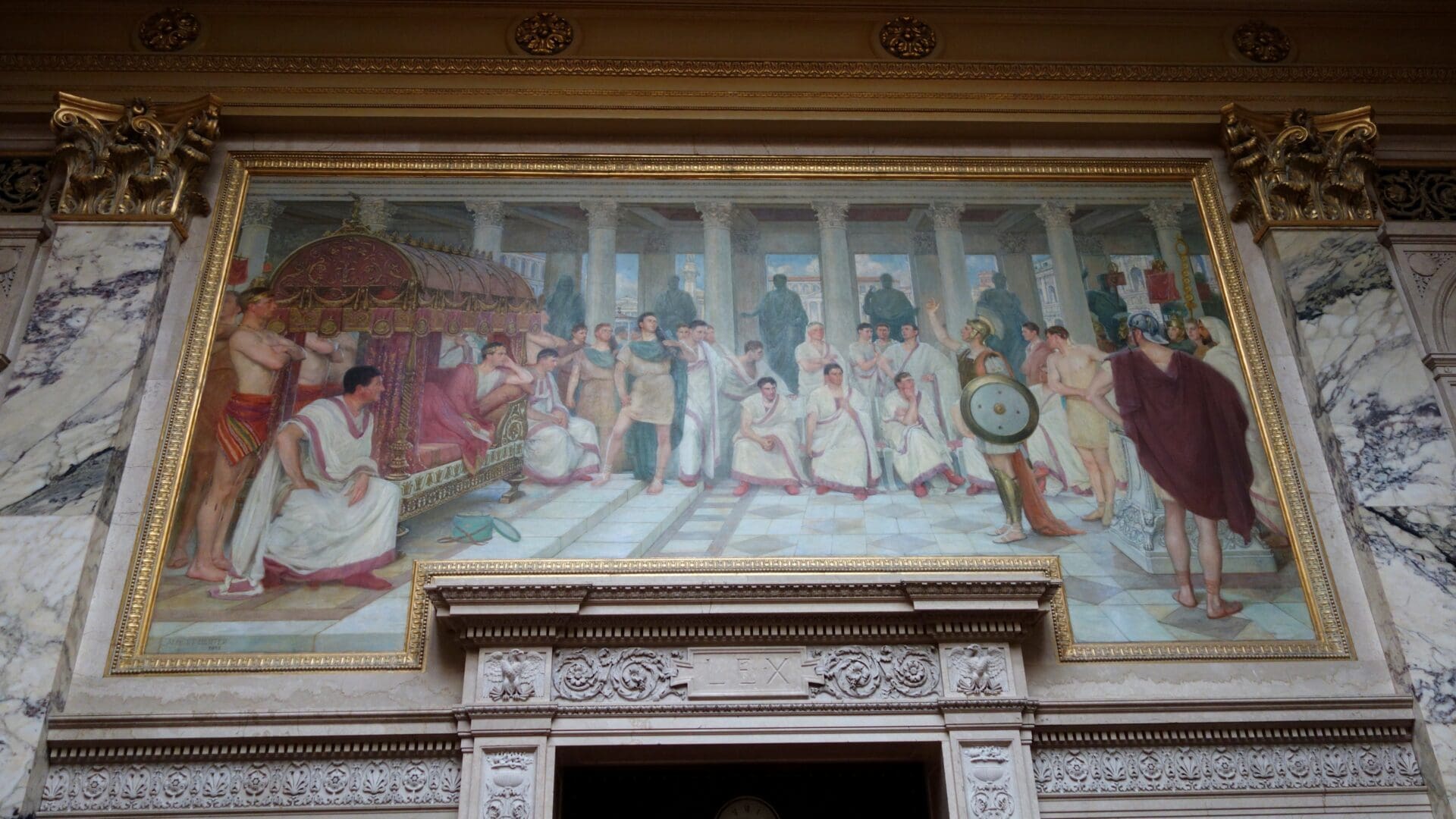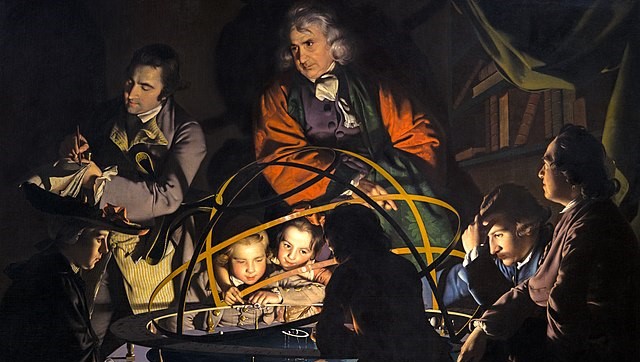The Roman biographer Cornelius Nepos (c. 110–25 BC), when writing about Epaminondas—the Theban statesman and military tactician who was largely responsible for the defeat of the Spartans at Leutra in 373 BC—underlined how vital law was for the harmony of society:
‘There was a “law” in Thebes, which punished by death if any one retained the government longer than was prescribed by law. Seeing that Epaminondas was being defeated for the purpose of preserving the state, he did not want to contribute to the destruction of the state, and he carried on the government four months longer than the people had ordered.’
Law has historically been an integral part of every civilised society, establishing rules of conduct and behaviour for its citizenry in order to secure freedom and moral agency.
Used in philosophical, scientific, and religious nomenclature, its apex resided in Roman law.
Roman jurists “developed the substance of the law, treating it as an intellectual exercise and producing many opinions.’[1] Their end was two-fold: resolving dilemmas and establishing a constant and stable legal system as a point of reference for future disputes.
There are three primary eras in which Roman law became a point of reference for those under Roman rule, referred to as the Archaic, Classic, and Post Classic Periods.
Archaic period (753–130 BC)
The law that dominated Roman society from its inception was the Quiritary law (ius quiritium or ius civilis). Composed by the Quirites, the Romans par excellence, these were exclusive rights of the Romans based on moral customs and ethics of the elders or ancestors. They were of social use and at the same time religious. These legal conceptions were decisive, since the gods, to whom the jurists always referred to, marked a behavioural ideal that was customarily considered correct. In the 5th century BC, these customs, which were based on the Roman socio-family structure, were codified, giving birth to the law of the Twelve Tables.
Classic period (130 BC–230 AD)
The Classic era saw the development of the ius civilis or ius quiritium, which was to accommodate the legal relations between Romans and foreigners. The figure of the pilgrim praetor, distinct from the praetor urbanus—the elected magistrate charged with administering justice within the city of Rome to settle relationships, especially in non-Italian territories subject to Rome (the provinces)—emerged. His role was to issue edicta (edicts) or proclamations in order to resolve unforeseen conflicts between Romans and foreigners. This gave birth to the ius gentium or law of people.
In general, the praetors were the main source of the edicts of Roman law, at least until 131 AD, when the Emperor Hadrian ordered them all to be compiled into a single text.
There was also another type of written law during this time, the senatus consulta or resolutions of the Roman senate. It needs to be added that, in concordance with the plebiscite, these had very little legislative force during the Republic. They were normally handed over to the praetors, who in turn acted on the proposals. In the early empire, as the role of the emperor increased, the Senate’s approval became automatic. Consequently, the emperor became the sole instrument of power. As a result, they ceased requesting the Senate to adopt any proposal they wanted to become law.
Post Classic Period (230 AD–530 AD)
This era is characterised by the concentration of powers within the authority of the emperor as the single source of law. The form procedure disappears, and the procedural means cease to be part of private law, giving way to a subjective right, stage of the extraordinary procedure.
Roman law would cease to exist as a point of reference for the body politic in the West after the fall of the Roman Empire in 476. Although it would be codified in Byzantium by the Emperor Justinian in the mid-sixth century in his Corpus iuris civilis, (also known as Justinian’s Code), it would remain unknown in the West until the eleventh century.[2]
The Code, composed in four volumes—Codex Constitutionum, Digesta or Pandectæ, Institutiones, and Novellæ Constitutiones Post Codicem—was a collection of laws and legal interpretations stemming from works of past laws and extracts of the opinions of the great Roman jurists:
Codex: a compilation, by selection and extraction, of imperial enactments to date, going back to them Emperor Hadrian in the second century AD.
Digesta: an encyclopaedia composed of mostly brief extracts from the writings of Roman jurists. The commission under Justinian extracted from them whatever was deemed valuable, generally selecting only one extract on any given legal point; and rephrased the originals whenever necessary for clarity and conciseness. The results were published in fifty books, each book subdivided into titles. All juridical statements not selected for the Digest were declared invalid and were thenceforth never to be cited at law.
Institutiones: it was basically a study manual, mainly introducing the Codex, although it has important conceptual elements that are less developed in the Codex or the Digesta.
Novellæ: a collection of the new laws Justinian himself issued, which was adapted on a regular basis until his death.
Justinian’s Code essentially not only formed the basis of Roman jurisprudence (including Canon Law), but also influenced civil law throughout the Middle Ages and into modern nation states.
Remnants of Roman law would survive in the West only as a subject of cultural study after 476, specifically with the Etymologies of St Isidore (composed between c.615 and 630). Isidore, despite not having access to Justinian’s Code, rendered a didactic exposition from the works of Roman jurists, like Gaius and Ulpian. Their works, as with other Roman jurists, would later reappear in the most important and revolutionary body of Roman law of the High Middle Ages.
Today, law has taken on a legalistic attribute, consequently shunning the spirit of the law, or rather, Roman jurisprudence.
This is, in part, due to the Austrian jurist and political philosopher Hans Kelsen (1881–1973), one of the pre-eminent jurists of the twentieth century, specifically for his school of thought of Legal Positivism, who classified law as both ‘an order of human behaviour’ and as a ‘coercive order’.[3]
It serves us, nevertheless, to appreciate the essence of Roman law if we desire as a civilised society to continue being civilised.
[1] Ferdinand Pirie, The Rule of Law: A 4,000-Year Quest To Order The World, London, Profile Books, 2021, 97.
[2] The discovery or rediscover of Justinian’s Code, i.e., Roman law is dated to 1076 at the Placitum of Marturi (present-day Poggibonsi, Italy). Cfr. L. Cambi Schmitter, “Placitum (judicial assembly) at Marturi (Poggibonsi) (1-24 March 1076),” trans. Alison Creber, in Academia.edu, (Translation_Placitum_at_Marturi_1076_pre.pdf), accessed 26 October 2022.
[3] Hans Kelsen, Pure Theory of Law. Trans., Max Knight. Clark (New Jersey): The Law Book Exchange, Ltd, 2002, 31.






